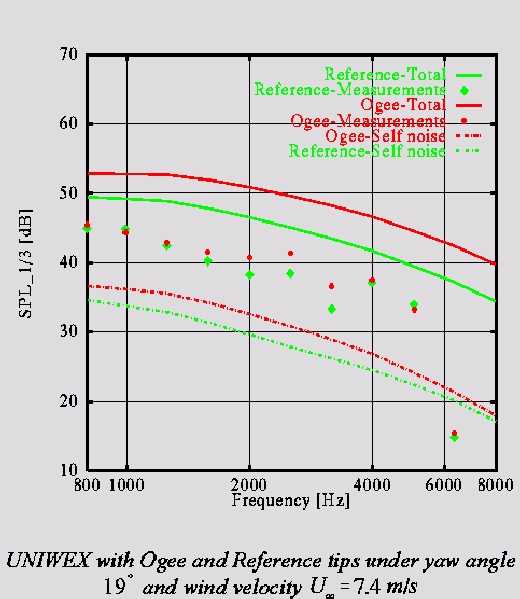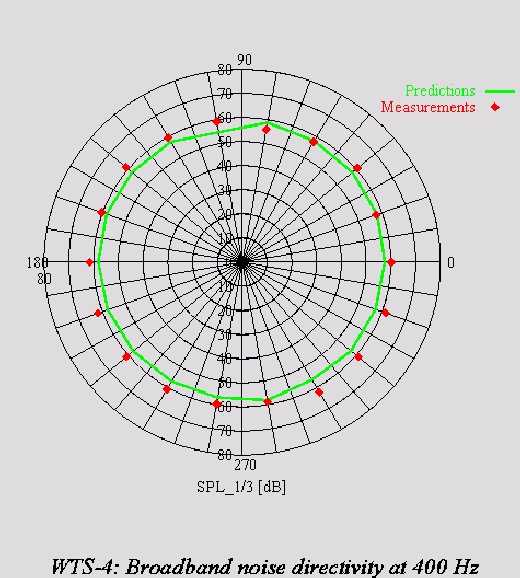|
|
|
 To investigate different mechanisms producing aerodynamic noise
from wind turbines.
To investigate different mechanisms producing aerodynamic noise
from wind turbines.
 To develope and evaluate computational tools for the prediction
of noise levels.
To develope and evaluate computational tools for the prediction
of noise levels.
 To provide guidelines for aerodynamic noise control and reduction.
To provide guidelines for aerodynamic noise control and reduction.
Kernel of the research work was the finalisation of NOISETURN: a numerical model for aeroacoustic analysis for wind turbines. NOISETURN is a post processor of GENUVP, the free-wake vortex model which provides the flow information.
The low-frequency noise is accounted for by using Ffowcs Williams-Hawkings formulation. The modelling of the tower with its wake and the flexibility effects are also included.
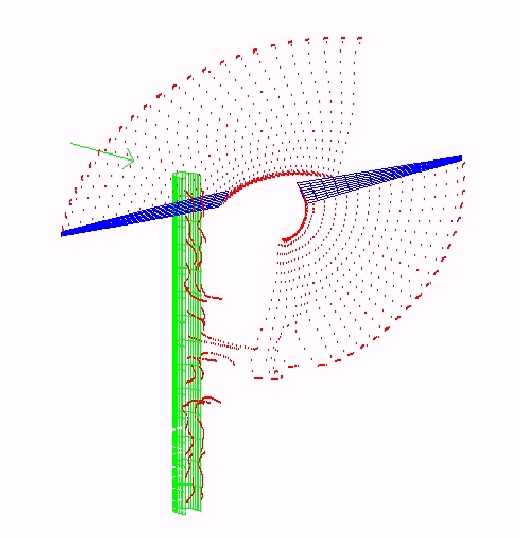
Vortex particle modelling of the flow around a downwind wind turbine and its tower
The self-induced and the turbulent inflow noise are accounted for by means of a procedure based in the approach of Brooks, Pope & Marcolini as implemented by Grosveld and Lowson.
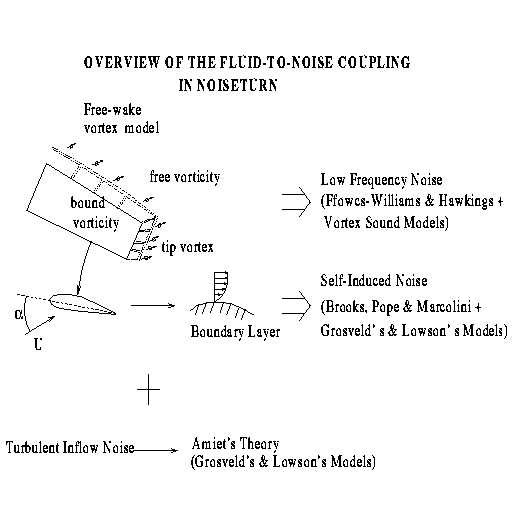
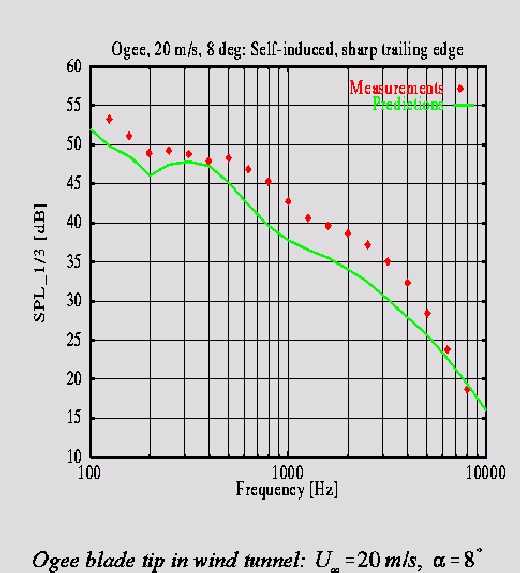
The model has been evaluated against several sets of available experimental data (UNIWEX, VESTAS27, WWG-0600, WTS-4) showing that it constitutes a sound basis for investigating ways to control and reduce the aerodynamic noise. In this connection a parametric study has been conducted revealing the importance of variable- speed control on one hand and the necessity of designing new airfoil shapes on the other.
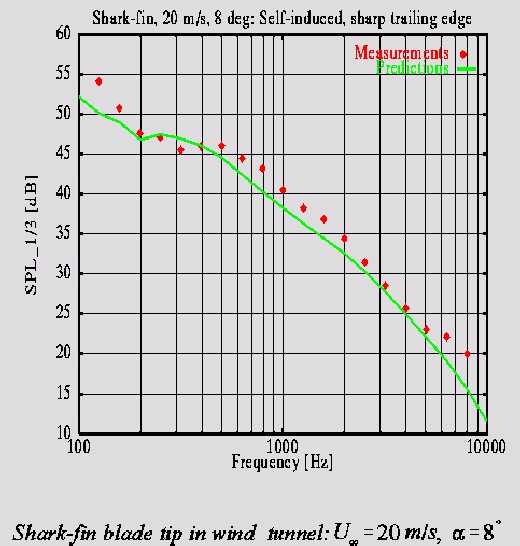
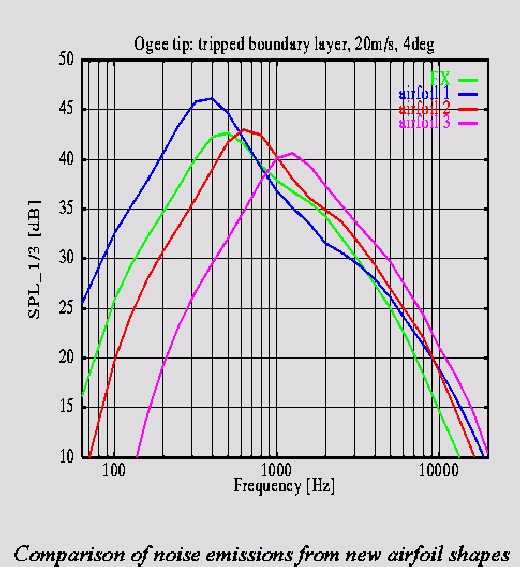
NOISETURN is currently being implemented into NOISEPARK: a numerical tool predicting noise emissions from wind parks.
